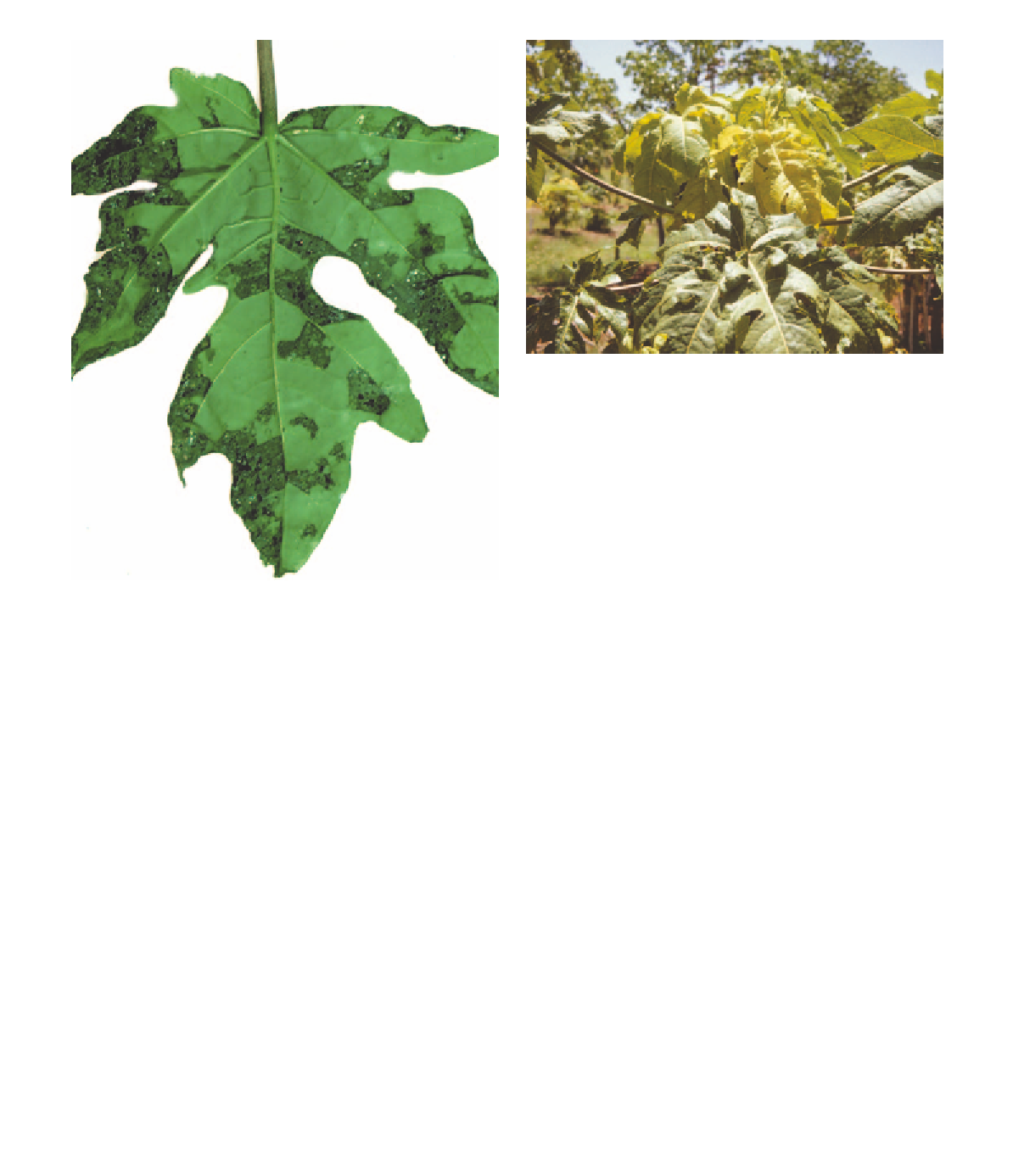Agriculture Reference
In-Depth Information
Fig 14.6 The early symptoms of papaya dieback are leaf yellowing
and some bunching in the crown leaves.
yellow but generally remain in position for some time.
Latex is usually absent in the stems and fruit. Fruit may
become f flaccid or drop and often show severe fungal
spotting. During cold weather, tip bending may be absent
and death of the crown occurs slowly.
Source of infection and spread
Although dieback occurs throughout the year, there is
usually a marked peak in incidence during spring
(October-December) and autumn (March-May). The
insect vector or carrier has not been found for the pathogen,
but it is likely that sap-sucking leaf hoppers or planthoppers
are involved because they transmit other phytoplasmas.
Papaya plants remain healthy when grown inside insect-
proof netting in areas severely affected by dieback.
Fig 14.5 Bacterial leaf spot. Irregular necrotic areas develop from the
initial infection.
Source of infection and spread
The bacteria are spread during wet, windy weather.
The disease is favoured by hot, humid conditions.
Importance
This is a minor disease of papaya in Australia, and no
specific management measures are required.
The phytoplasma is thought to be present in alternative
hosts in bushland and moved into papaya plantations by
leaf hoppers that arrive by weather events. Major epidemics
occur in years when dry conditions in late winter and early
spring favour the migration of insects from unattractive
dry vegetation into papaya plantations. The insects do not
breed or remain on papaya for long, because it is not a
favoured host.
DIEBACK
■
Cause
A phytoplasma
Candidatus
Phytoplasma australiense .
Importance
Dieback disease occurs in all papaya production areas in
Australia. The disease limits papaya production in
southern and central Queensland, and regular epidemics
destroy entire blocks of papaya.
Symptoms
The initial symptom is a bunching and yellowing of the
inner crown leaves followed by a slight bending of the stem
tip. One or two crown leaves shrivel and die and a dark,
necrotic lesion develops where these leaves join the stem.
The first leaf to wilt generally has an etched appearance
on the undersurface due to a darkening of the smaller
veins. The rest of the crown leaves eventually die and the
stem begins to die from the top. The older leaves may
Management
Effective management is difficult because of the rapid
onset and spread of the disease.











